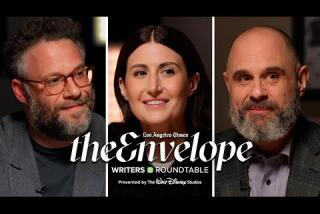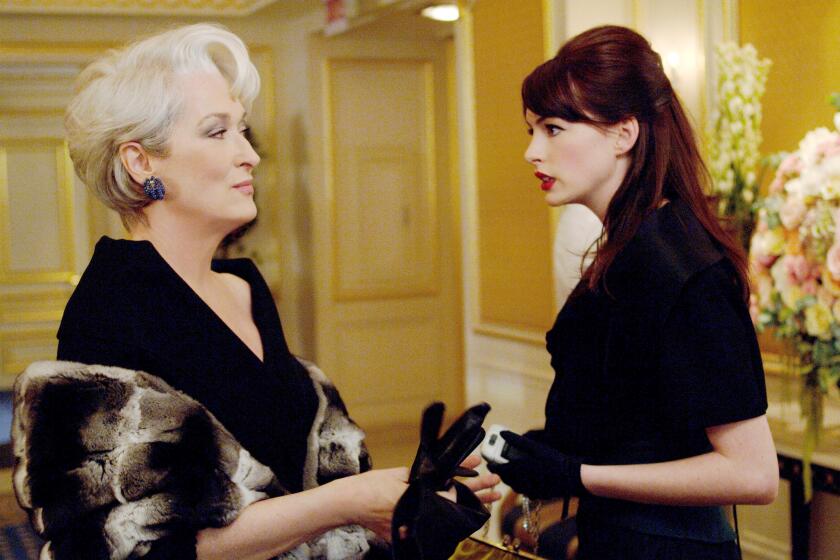The Home Audience Is Listening : Technology: George Lucas’ THX sound system has made its way from movie theaters to living rooms. Cheap it’s not.
- Share via
SAN RAFAEL, Calif. — The gulf between the sound you hear in a first-rate cinema and the sound you hear at home from a videocassette or a laser disc is as between night and day, or at very least late dusk and day.
Where is the sense that you are in the middle of the sound, or that a jet is roaring past your left shoulder, or just that not all the talkers are clustered in the center of the room?
Some 500 cinemas worldwide (a number likely to double in the next 18 months) are now equipped with George Lucas’s THX sound system, whose presence is announced with a soul-shaking trailer that concludes, “The Audience Is Listening.”
At the Summer Consumer Electronics Show in Chicago starting this weekend, Lucasfilm is announcing its Home THX Audio System. Last week at Lucas’ huge Skywalker Ranch complex, hidden in the folds of the beautiful Lucas Valley (no kin) in Marin County, Lucas staffers demonstrated the system in a living room-sized office.
The showing included a demonstration of the layering up of the innumerable sound inputs to create a finished sequence of “Raiders of the Lost Ark” (Harrison Ford fleeing the giant boulder). The point was that you ain’t heard nothing yet, at least not at home.
On the initial run, only the overwrought dialogue can be heard within a rather curious silence. Then the sequence was run again, adding small and specific sound effects, then very large sound effects, atmospheric sounds, very, very large sound effects, John Williams’ thundering score and at last the whole reverberating enchilada, capable of rattling the portrait of Aunt Caroline off the living room wall.
Lucasfilm will not make the gear but has licensed the Lucas-developed, patented or patent-pending circuitry that makes the seven-speaker system work. Japan-based Technics (a Matsushita subsidiary) and American companies Lexicon and Snell Acoustics are the first three licensees.
Cheap it won’t be, initially, although like VCRs and CD players, prices are likely to fall as sales volume increases. The Snell multimedia package, the seven-speaker component of the Home THX System, will retail for $5,000. Lexicon has priced its computer-like digital processor at $2,500. Technics, which will manufacture a complete unit--controller, three power amplifiers and the speakers--said Tuesday it had not yet established its price.
Since it will be a shame to waste the sound on anything less than a very large TV set (the demonstration at the ranch was on a 100-inch projection screen), we are talking about little if any loose change from $12,000. The system will most likely be a custom installation, as top-grade hi-fi rigs have generally been.
The THX system will in fact incorporate, or more probably replace, existing hi-fit setups, creating what the Lucas folk say will be an even better hi-fi sound. Buzz Goddard of Lexicon, interviewed by phone, says that its processor can synthesize the acoustical effect of everything from the concert hall to a small nightclub.
While the nature of the Lucas electronics is beyond the reach of someone who has never fully comprehended the workings of the safety pin, what seems reasonably clear is that the two channels of audio information from a good videocassette or laser disc can be decoded into four channels that feed left, right, center and wraparound speakers. The processing sorts out the signals and balances them so that the sound fills the room evenly and the dialogue is not masked by the noisy effects, as sometimes happens in the cinema.
The resident sound wizard in the ranch’s huge Tech Building (designed to resemble a winery and indeed with a thriving young vineyard maturing in front of it) is Tomlinson Holman, who joined Lucas in 1980 after four years at Advent and later as head of his own firm, Apt/Holman.
He designed the THX theatrical sound system and established Lucas’ Theatre Alignment Program, a service firm that makes sure a theater’s sound system is tailored to the release print at hand.
The “THX” is a nice if coincidental pairing of “Tomlinson Holman eXperiment” and the title of Lucas’ USC student film, “THX-1138,” which led to his first feature and his whole remarkable career.
“The goal is very simple,” Lucas said in his office at the ranch house. “It’s just the desire to present a film as the filmmakers intended it to be seen, heard and experienced. The technology is advancing to the point at which we can upgrade the criteria for the home theater. And that’s what we’re talking about, the home entertainment center.
“So much of the quality of a picture depends on the quality of reproduction, and unfortunately so much of the quality slips through the cracks. The filmmaker works very hard to deal with the subtleties. But we seem to live in a generation in which everything is a bad copy. And looking at a copy isn’t the same as looking at the Mona Lisa.
“Our society needs to learn to slow down and appreciate quality. I’m trying to see if the quality of films can’t be retained, in the theaters, and now at home.”
Lucas himself continues to concentrate much of his interest, as he has for a decade, on interactive educational television, aiming toward a prototype system that would incorporate the most effective technologies for making the medium a positive teaching tool.
He has reorganized the corporation into two parts, Lucasart and Lucasfilm, hiving off the production activities from the 16 other divisions. “I don’t have the time to run a giant corporation,” Lucas says, “and we’re nearly a $100 million a year business now. I’m back to what I do best, making movies.”
It is possible, he says, that he will extend the “Star Wars” series in the next five to seven years. “It’s a big effort, and the costs of doing that kind of film are fantastic now. I don’t want to do it until we find ways to make it economically feasible and reasonable.” Lucas has four other features and four television projects in development.
With Martin Scorsese and other filmmakers, Lucas also continues to lead the fight for film preservation. “It’s amazing,” he says, “that you have to fight the studios to get them to preserve their films. . . . Parts of ‘Dr. Strangelove’ are gone; some of the music is lost. Kubrick is having to photograph individual frames to create a new fine-grain negative. That’s madness, tragic madness.”
Although Lucas is as technologically adventurous as any filmmaker--and most of the success of Lucasfilm has grown from the innovations whose development he has underwritten--he has no doubt what the priorities are.
“Entertainment is still good ideas, not technology. Good stories are still at the heart of it all.” It is just that he wants the stories to be seen, and heard, loud and clear.
More to Read
The biggest entertainment stories
Get our big stories about Hollywood, film, television, music, arts, culture and more right in your inbox as soon as they publish.
You may occasionally receive promotional content from the Los Angeles Times.










